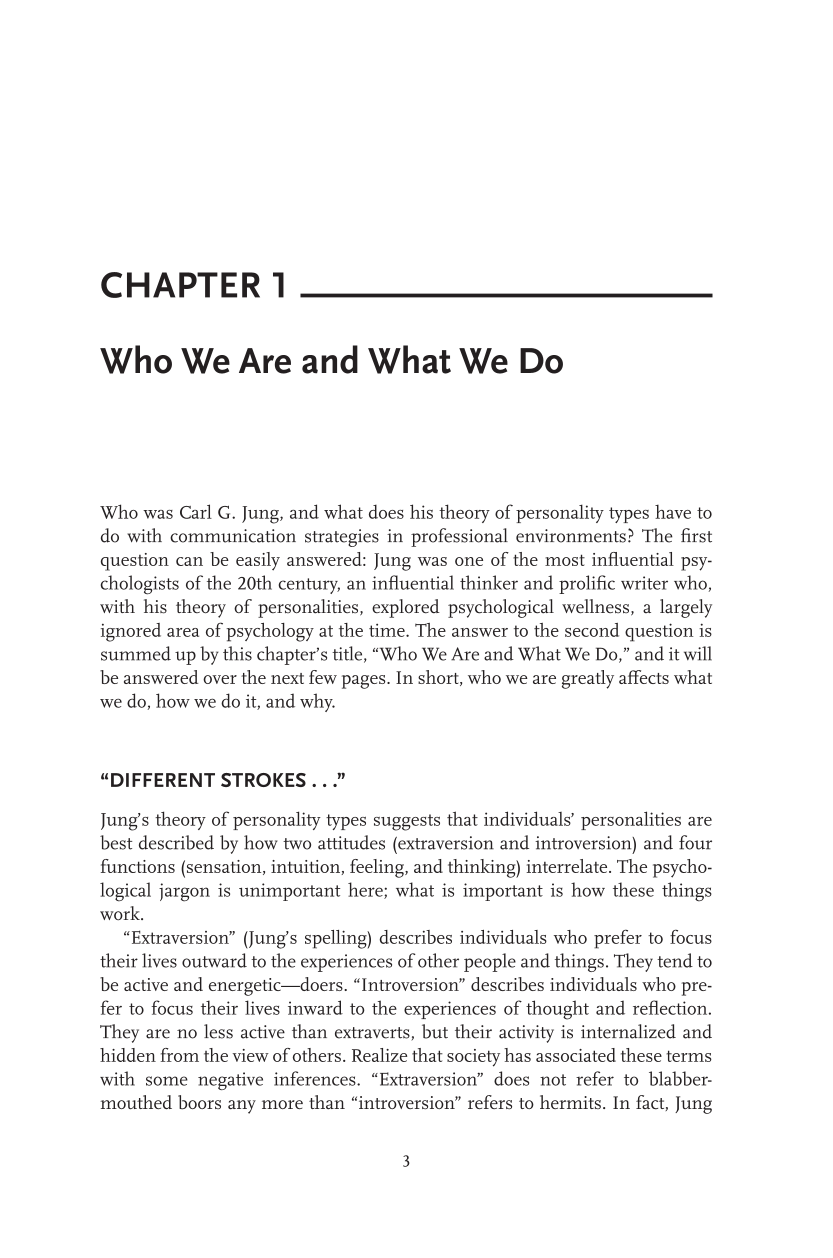3
Who was Carl G. Jung, and what does his theory of personality types have to
do with communication strategies in professional environments? The first
question can be easily answered: Jung was one of the most influential psy-
chologists of the 20th century, an influential thinker and prolific writer who,
with his theory of personalities, explored psychological wellness, a largely
ignored area of psychology at the time. The answer to the second question is
summed up by this chapter’s title, “Who We Are and What We Do,” and it will
be answered over the next few pages. In short, who we are greatly affects what
we do, how we do it, and why.
“DIFFERENT STROKES . . .”
Jung’s theory of personality types suggests that individuals’ personalities are
best described by how two attitudes (extraversion and introversion) and four
functions (sensation, intuition, feeling, and thinking) interrelate. The psycho-
logical jargon is unimportant here; what is important is how these things
work.
“Extraversion” (Jung’s spelling) describes individuals who prefer to focus
their lives outward to the experiences of other people and things. They tend to
be active and energetic—doers. “Introversion” describes individuals who pre-
fer to focus their lives inward to the experiences of thought and reflection.
They are no less active than extraverts, but their activity is internalized and
hidden from the view of others. Realize that society has associated these terms
with some negative inferences. “Extraversion” does not refer to blabber-
mouthed boors any more than “introversion” refers to hermits. In fact, Jung
CHAPTER 1
Who We Are and What We Do
































































































































































































































































